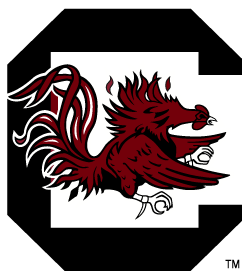Jan. 11, 2017

Keeping student-athletes on the field and getting them back after an injury are key components of any program’s success, and Scott Gardner, South Carolina’s athletic trainer for the track and field program, takes pride in helping the student-athletes reach their goals.
“Knowing I can make a difference in their performance is the best part of my job,” Gardner said. “If a track and field athlete doesn’t feel like they are 100 percent, then they’re not able to give 100 percent. If someone normally runs 46 seconds for his 400 (meter) time, but he can’t do that and runs a 48, then he’s at the back of the pack. If someone says they’re at 95 percent, then a five percent difference is a big deal. The challenge is not only to get the student-athlete to feel physically that they are 100 percent, but to also feel mentally that they are 100 percent.”
Now 54, Gardner has been a certified athletic trainer for 32 years, and the Florida native has spent most of his life in SEC country after earning his undergraduate degree from the University of Kentucky and his master’s degree from LSU. Having worked in Nashville, Tenn., Ohio and Colorado Springs, Colo., Gardner is in his eighth year at South Carolina working with the track and field and cross country programs.
“Scott is a tremendous asset for our program, and the continuity that comes with having him on our staff is invaluable,” said head track and field coach Curtis Frye. “He knows each of our student-athletes and tracks their wellness from the time they step on campus until the time they graduate. He also does a fantastic job coordinating with all of the health and wellness aspects of our department, including our medical team and psychologist. There’s no question that having Scott as part of our program helps us win championships.”
The average fan comes to a stadium or field for a few hours to enjoy a college athletics competition. In a sport where every second, or one hundredth of a second, or every inch counts, Gardner and his fellow athletic trainers log a lot of hours with the student-athletes, and success is the culmination of a much longer process.
“I spend a lot of time with them from Sunday through Thursday,” Gardner said. “There’s not a lot we can do the day of a track meet. We come in early in the morning during the week. Our long distance cross country team practices in the morning. Then we’ll do some evaluations or re-evaluations of previous injuries. When one o’clock hits, it’s practice time for the athletes based on the other events. So we’re here to prepare them for that. We leave late because our teams will lift weights after that. Then I have them for another 30 to 60 minutes, so I’m leaving here at around 7 p.m. or later.”
There’s no question that having Scott as part of our program helps us win championships.
Curtis Frye, Head Coach
Track and field is unique in the wide variety of events that can result in different types of injuries, whether it’s for sprinters, jumpers or throwers, but with more than three decades of experience working with a variety of sports, Gardner is well-prepared.
“I look at it from the standpoint of all the different sports I have experience with,” Gardner said. “I have experience in dealing with baseball players and injuries in the upper body that carries over to our throwers in track and field. The rehabilitation can be very similar, but we do have to modify their rehab programs to throwing the javelin instead of throwing the baseball.”
Gardner acknowledged that there are also advantages to working with same sport from year to year.
“It’s very important to be with one sport for an extended period of time because a college student-athlete is going to be here for four to five years,” Gardner explained. “To see them from freshman year to graduation is important in maintaining their abilities. I don’t want to see someone for two years and then jump ship to another sport just for the sake of working another sport.”
While the average fan may only see an athletic trainer rush on to the field or court when something goes wrong, there is a lot of preventive maintenance that goes into their work with the student-athletes.
“We do evaluations when they come in as freshmen,” Gardner said. “If coaches see some deficiencies during practice, we try to address them. We have devices available to us such as the Hydroworks underwater treadmill, an Alter-G antigravity treadmill, elliptical machines, stationary bikes and things like that to help us get a little extra work in, without the stress of being on the track.”
Gardner is humble in noting that he is one part of a well-stocked medical program for Gamecock student-athletes.
“We have an excellent medical staff,” Gardner said. “We have orthopedic surgeons, who are deeply involved with the program. We have our general medical physicians. We have three quality massage therapists that work with us on a weekly basis, as well as my own graduate assistants. I like the team approach that we have to take care of the student-athletes. We stay on top of the latest modalities out there.”
Communication with the coaching staff is another critical component of Gardner’s position.
“Every night, I send out an injury report that gives the coaches a rundown of what happened that day,” Gardner said. “It will explain expectations for the student-athlete for the next day, and it gives them a heads up as to whether he or she will be able to compete in the coming weekend event so the coaches can change their travel roster accordingly.”
South Carolina track and field has enjoyed a long history of success, and even though a home track meet may not draw 80,000 fans like a football game at Williams-Brice Stadium, Gardner said working with this Gamecock program has been rewarding.
“I really like working with these types of athletes,” Gardner said. “They’re here because they want to be here. I have almost 100 student-athletes. Very few of them are on full scholarships. There are a great deal of walk-ons, and getting them to be competitive in the SEC is quite exhilarating and a fun part of the job.
“We’ve got athletes from all over the country and all over the world, year in and year out.”
With the recent renovation of a high-quality outdoor facility, as well as having the new indoor facility under construction, Gardner looks forward to less travel and more opportunities see the student-athletes perform only a short walk from his office at The Roost Athletic Training Facility.
“Bus seats are only so comfortable after a while,” Gardner laughed.












